




Simple Steps to Understand Analog Clocks and Read Time
I am sure you might have seen different types of clocks. Some might have numbers written on them, some might have hour, minute and second hands on them. There are basically two types of clocks - analogue and digital. Let’s first know what a clock is before going into the analogue clock.
A clock is a device that measures and represents time. Some clocks show only time, whereas others show temperature, date, weather, etc. Also, some clocks have a stopwatch and some have alarms.
The two clocks that are widely used are analogue clock and digital clock. Both the clocks have different ways to represent time. An analogue clock is a clock that shows time with two or three moving hands that move in a circular motion. On the other hand, a digital clock is a clock that simply uses numbers to represent time.
Here, we will discuss analogue clocks in detail.
What are Analogue Clocks?
A clock is known as an analogue clock when it has moving hands and is usually (hours) marked from 1 to 12 to show you the time of the day.
In some analogue clocks, hours are marked with Roman numerals (such as I, II, III, IV, etc.), while in others, there are no numbers marked in the clock.
What are the Hands of Analogue Clock?
As discussed above, analogue clocks commonly have two or three hands. If an analogue clock has two hands, then there is a:
Larger hand, known as a minute hand.
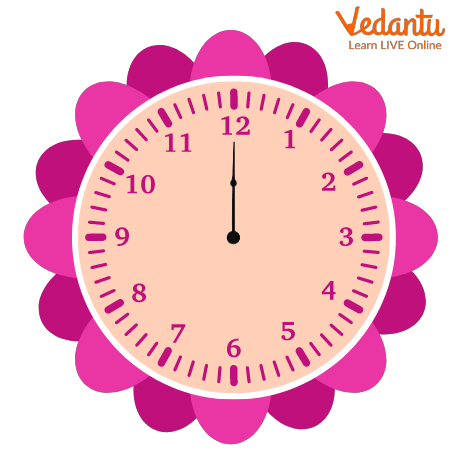
Image: Minute hand
Smaller hand, known as an hour hand.
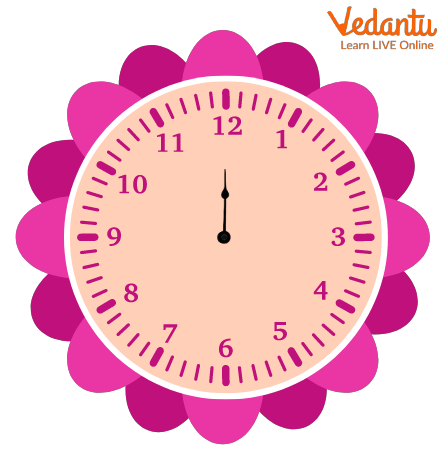
Image: Hour hand
A clock with three hands has a second hand. The second hand is as long as the hour hand but much thinner.
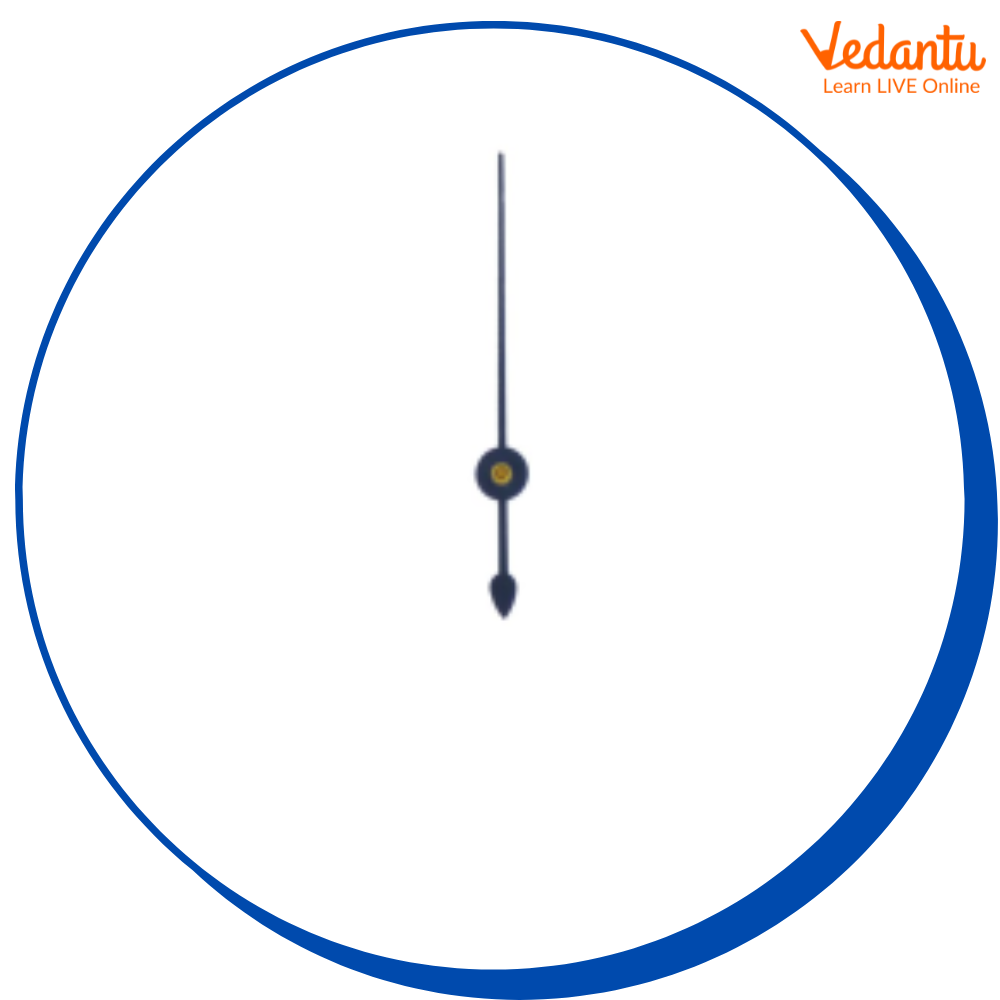
Image: Second Hand
How Does Hour Hand, Minute Hand, and Second Hand Rotate in Analogue Clocks?
Hour Hand Rotation
The hour hand completes one rotation in 12 hours or two rotations in 24 hours.
Minute Hand Rotation
The minute hand completes one rotation in 60 minutes.
Second Hand Rotation
The second hand completes one rotation in one minute.
How to Read Time in Analogue Clocks?
To read a time using an analogue clock, just look at the hands where they are pointing. The smaller hand, also known as the hour hand, will tell you the hour. The larger hand, also known as the minute hand, will tell you the minutes of the current hour. The thinnest hand, also known as the second hand, will tell you the seconds of the current minute.
Let’s learn to read the time.
Step 1: Look at the hour hand first. This will directly point to the number of hours, or somewhere between that number and the next number.
Example
Here, the hour hand is directly pointed at 10. Hence, the hour is 10.
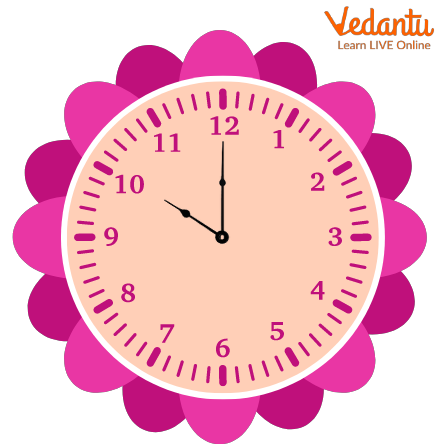
Here, the hour hand is between 1 and 2. Hence, the hour is 1.
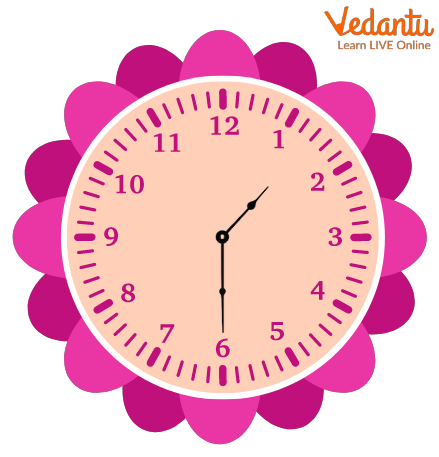
Image: An analogue clock showing time as 1:30
Step 2: Now, look at the minute hand. It starts at the top of the clock. For every minute that passes, it moves one tick around the clock.
Now, start from the top and count the tick marks to see how many minutes have passed.
You can count by 1’s
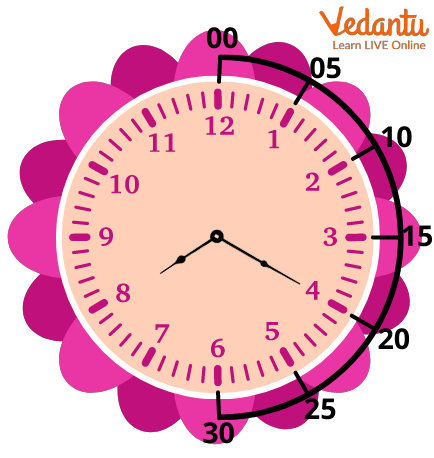
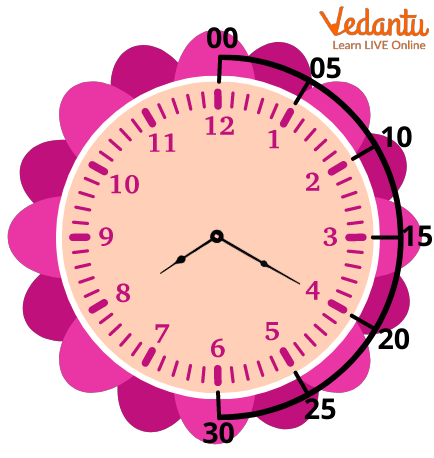
The minute hand in the above clock shows 20 minutes. Also, it is showing 8 hours as the hour hand is between 8 and 9. Therefore, the time is 20 past 8 or 8: 20.
Let’s take one more example to understand in a better way.
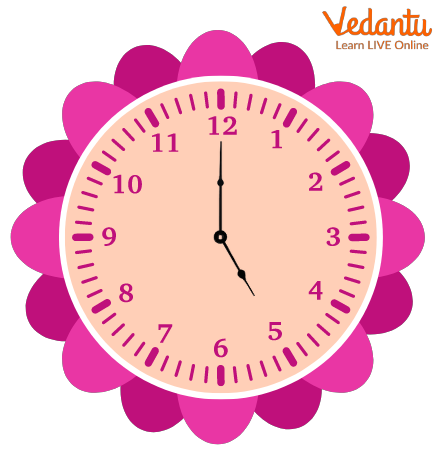
Image: An analogue clock showing time as 5
Here, the hour hand is at 5. Hence, the hour is 5.
The minute hand is pointing at 12. This implies 0 minutes after the hour. Therefore, the time is 5:00, or you can also say 5’0 clock.
Step 3: Now, look at the second hand. It works similarly as minute hands. It also starts at the top of the clock. For every second that passes, it moves one tick around the clock. Let us understand with an example:
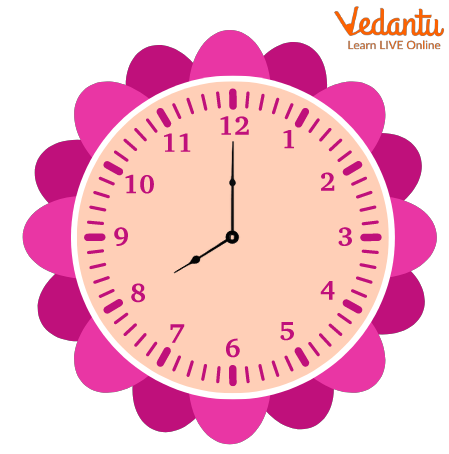
Image: An analogue clock showing time as 8
Here, the hour hand is pointed at 8. Hence, the hour is 8.
The minute hand is pointed at 12. This implies 0 minutes after the hour.
The second hand is at 4. This implies that 20 seconds have passed. The time here is 8 hours 0 minutes and 20 seconds.
Conclusion
In short, an analogue clock is a clock with three moving hands, namely the hour hand, minute hand, and second hand to show you the time. Generally, in an analogue clock, the hour hand is marked from 1 to 12. Also, an analogue clock is named as analogue because it moves smoothly from one point to another without any sudden break or jumps.
FAQs on Analog Clock: Learn to Tell Time Easily
1. What is an analog clock and what are its main parts?
An analog clock is a tool used to tell time using a circular face with numbers and moving pointers called 'hands'. The primary parts of an analog clock are:
The Hour Hand: The shorter, thicker hand that points to the hour.
The Minute Hand: The longer, thinner hand that points to the minutes.
The Clock Face: The front of the clock with numbers 1 through 12 printed on it.
The Second Hand: A very thin, fast-moving hand that indicates seconds, which is not present on all analog clocks.
2. What is the basic method for a beginner to read time on an analog clock?
To read the time, you need to look at both hands. First, find the short hour hand; the number it has just passed indicates the current hour. Next, look at the long minute hand. To find the exact minutes, multiply the number the minute hand is pointing at by 5. For example, if the hour hand is past 4 and the minute hand is on 6, the time is 4:30.
3. What do AM and PM mean when telling time?
AM and PM are used in the 12-hour clock system to distinguish between the first and second half of the day. AM (ante meridiem) refers to the time from midnight to noon (the morning). PM (post meridiem) refers to the time from noon to midnight (the afternoon and evening). For instance, 8 AM is in the morning, while 8 PM is in the evening.
4. How can I easily understand time for 'quarter past', 'half past', and 'quarter to'?
These terms describe specific points in an hour:
Quarter Past: This is 15 minutes after the hour, when the minute hand points to the 3. For example, 7:15 is 'quarter past 7'.
Half Past: This is 30 minutes after the hour, when the minute hand points to the 6. For example, 7:30 is 'half past 7'.
Quarter To: This is 15 minutes before the next hour, when the minute hand points to the 9. For example, 7:45 is 'quarter to 8'.
5. Why are there 12 numbers on an analog clock but 24 hours in a day?
An analog clock operates on a 12-hour cycle to keep the clock face simple and easy to read. To cover a full 24-hour day, the hour hand must complete two full rotations. The first rotation (from midnight to noon) is the 'AM' period, and the second rotation (from noon back to midnight) is the 'PM' period. This system divides the 24 hours into two manageable 12-hour segments.
6. Why does the minute hand move so much faster than the hour hand?
The hands move at different speeds because they represent different units of time. The minute hand must track 60 minutes to complete one hour, so it moves a full 360 degrees around the clock face in 60 minutes. In that same amount of time, the hour hand only needs to move from one hour-number to the next (e.g., from 2 to 3). This means the minute hand moves 12 times faster than the hour hand.
7. What is the key difference in telling time on an analog clock versus a digital clock?
The primary difference is how time is displayed. An analog clock shows time visually using angles and positions of its hands, requiring you to interpret where the hands are pointing. A digital clock displays time with exact numbers (e.g., 10:45), requiring no interpretation. The analog clock helps in understanding the passage of time as a continuous flow, while a digital clock provides an instant, precise reading.
8. If the hour hand is exactly on the 3 and the minute hand is on the 12, what is the time?
When the minute hand is on the 12, it signifies the start of a new hour, or 'o'clock'. Since the hour hand is pointing exactly at the 3, the time is precisely 3 o'clock (3:00). At this point, no minutes have passed in the new hour.

















